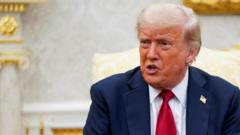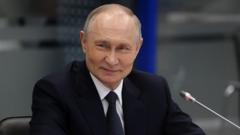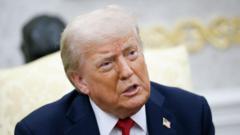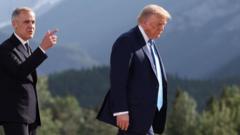China's growth slumped to 5.2% as ongoing trade tensions and a property crisis impact its economic landscape, prompting fears of missing growth targets.
China's Economic Growth Faces Headwinds Amid Trade Tensions

China's Economic Growth Faces Headwinds Amid Trade Tensions
Slowing growth and a struggling property market raise concerns for China's economy.
China's economy is experiencing a slowdown, with growth rates impacted by trade conflicts and a challenging property market. Official statistics revealed that the world's second-largest economy grew by 5.2% in the last quarter compared to the same period last year, a decrease from 5.4% in the previous quarter. Despite this decline, the country has avoided a severe economic downturn largely due to supportive measures taken by the Beijing government and a fragile truce on tariffs with the U.S.
China's National Bureau of Statistics stated that the economy “withstood pressure and made steady improvement despite challenges.” Driving the growth were developments in manufacturing, with a notable 6.4% rise spurred by demand for innovative technologies like 3D printing, electric vehicles, and industrial automation. The services sector, encompassing essential fields such as finance and transport, also showed promising growth.
However, challenges remain evident, including a drop in retail sales growth to 4.8% in June, down from 6.4% in May. Additionally, new home prices fell at the fastest monthly rate in eight months, highlighting ongoing difficulties in the real estate sector despite various government initiatives aimed at stabilizing property prices.
Economists predict that China might fail to meet its annual growth target of around 5%, with estimates suggesting a potential minimum growth floor of 4%—an acceptable level in political terms, according to Dan Wang from Eurasia Group. The trade conflict between President Xi Jinping and former U.S. President Donald Trump escalated to a point where the U.S. implemented steep tariffs of 145% on Chinese imports, leading to Beijing's reciprocal 125% duty on certain U.S. goods.
Recent negotiations in Geneva and London have paused these tariffs, but both nations need to finalize a long-term trade resolution by August 12. The repercussions of these trade policies are felt not only bilaterally but also on economies that have close ties to China, which have also been subjected to U.S. tariffs.



















